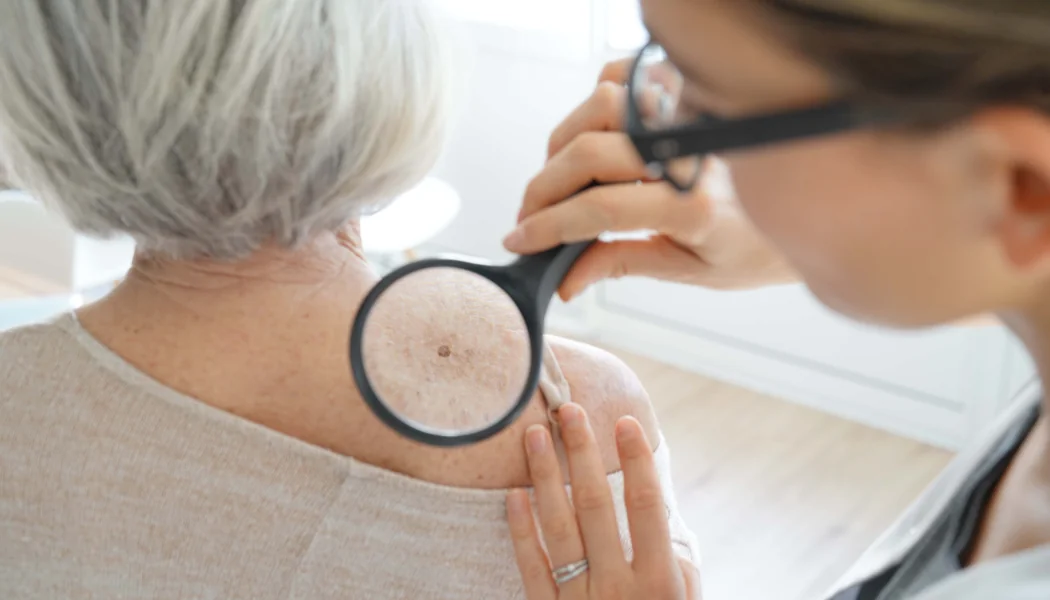Melanoma 101: What You Need to Know

Skin cancer diagnoses are growing at an alarming rate.
In fact, over the past three decades, more people have been diagnosed with some form of skin cancer than all other cancers combined. Melanoma, an aggressive form of skin cancer, is the deadliest type.
Many cases of melanoma can be prevented. To protect yourself and your loved ones, here is all you need to know about the deadly melanoma skin cancer.
First off, what is it?
Melanoma develops from melanocytes or the skin cells that produce melanin pigment, which gives the skin its color.
Melanoma can develop anywhere melanocytes are found, but certain areas are more prone than others. In men, it is most likely to affect the back and the head and neck area. In women, the legs are the most common site.
What causes melanoma skin cancer?
Melanoma forms when something goes wrong in the melanocytes. When the DNA in these cells becomes damaged, they may begin to grow out of control. Experts believe that 90% of all melanomas are caused by ultraviolet (UV) radiation from the sun or indoor tanning devices.
How common is it?
In 2021, over 200,000 cases of melanoma skin cancer will be diagnosed in the United States. Of those, 101,280 cases will be in situ (noninvasive), confined to the top layer of skin (the epidermis), and 106,110 cases will be invasive, penetrating the epidermis into the skin’s second layer (the dermis). The number of new cases of melanoma cancer has steadily increased over the last 30 years.
How can one stay protected from melanoma skin cancer?
As most melanoma skin cancers are caused by UV radiation, the most important thing a person can do is protect themselves from the sun and avoid tanning beds.
It is important to remember that protection from UV radiation is important all year round and among all various weather conditions. The Center for Disease Control and Prevention states that the sun can be exceptionally damaging between the hours of 10 am and 4 pm Daylight Savings Time (9 am to 3 pm standard time). During this time, it is recommended that people stay in the shade, wear clothing that covers arms and legs, wear a hat, wear sunscreen, and wear sunglasses.
What is a melanoma mole?
Melanoma skin cancer often resembles moles and sometimes may arise from them. They can be found on any area of the body, even in areas that are not typically exposed to the sun. For this reason, it is important to know the color, size, and location of moles on one’s body to ensure any changes are noticed.
What research is currently being done on melanoma skin cancer?
The National Foundation for Cancer Research (NFCR) is committed to fighting cancer by funding high-risk, high-impact, and high-reward discoveries for cancer patients. Dr. Helmut Sies, an NFCR-funded researcher, is making great strides in melanoma skin cancer research.
After years of studying the role of micronutrients in cancer prevention, Dr. Sies discovered that lycopene, a carotenoid and antioxidant found in tomatoes and carrots, can reduce the damaging effects of oxygen produced by our body’s essential metabolic processes, and has strong skin cancer prevention effects. His research also illustrated how flavonoids (found in cocoa products) can prevent skin damage caused by ultraviolet radiation, improve blood vessel function and reduce cardiovascular risk.
To learn more about skin cancers and the exceptional research by NFCR-funded scientists, visit NFCR’s Skin Cancer page.
Sign-up to Stay Informed About Cancer Research Breakthroughs with NFCR!
A world without cancer is possible. Help us turn lab breakthroughs into life-saving realities.

5.7 Million+
Donors who have fueled NFCR’s mission

$420 Million+
Invested in high-impact research & programs

36+ Labs & Hundreds of
Nobel Laureates & Key Scientists received NFCR funding, driving breakthrough research













